—by Ross Courtney
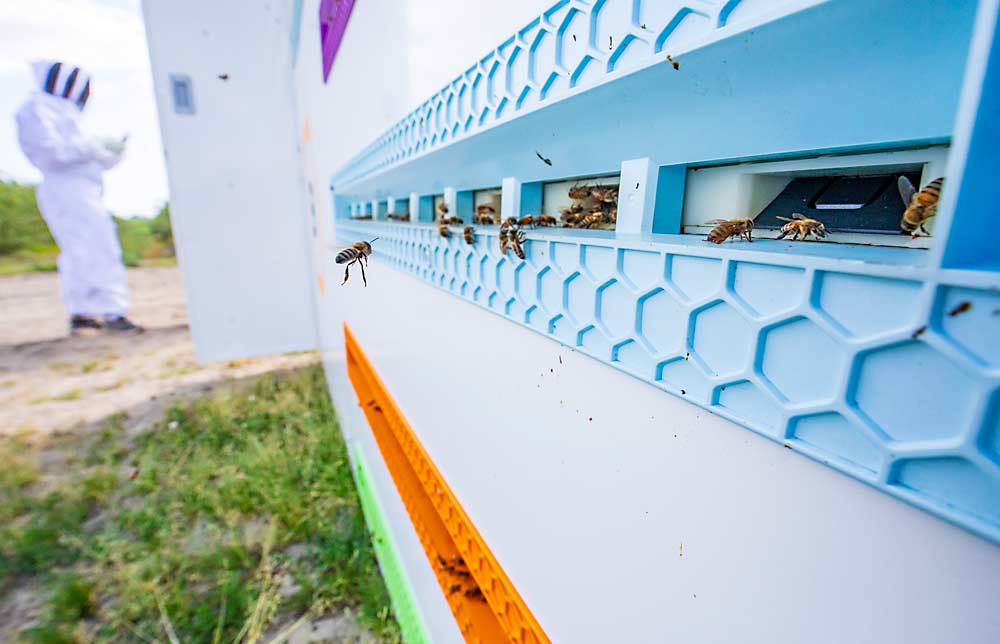
Beehives are getting smarter.
Part tech startups, part beekeepers: New companies are combining sensors, robotics and traceability tags with age-old beekeeping practices to sell precision pollination to orchardists.
These bee service companies claim to give growers peace of mind by showing them the strength of their hives. Fans say the tools offer transparency and validation during a time of year when uncertainty can cause a lot of stress.
“There’s just too much at stake during that short period,” said Keith Veselka, managing partner of NWFM, an orchard management company in Washington known for early technology adoption.
Two California startups — BeeHero and Beewise — each teamed up with beekeepers to create pollination companies that market directly to growers by offering a computer dashboard of data to inform their decisions about hive placement, hive removal and pollenizers. A Canadian company, Nectar, caters to beekeepers with RFID traceability tags.
All three count beekeeping experience among their founders and aim to help beekeepers improve the nation’s bee health.
Honey bee colony loss has been an annual problem for decades but worsened recently. In January, beekeepers reported more than 50 percent of their colonies had died or been abandoned over the winter — a financial blow of $139 million, according to an annual survey by several bee groups.
“We’re having a pretty big crisis in California,” said Itai Kanot, BeeHero’s chief growth officer.
BeeHero
BeeHero is all about data.
The Fresno company hires beekeepers and places hives, much like brokers, then equips the otherwise ordinary colonies with its sensors. They claim to be the largest pollination service provider in the world, with more than 300,000 hives working 200,000 acres. Vegetable seeds are one of their major markets.
In 2023 and 2024, BeeHero set up in the Washington State University Smart Orchard, which consists of adjacent WA 38 and Cripps Pink apple blocks set aside for technology trials, near Mattawa, Washington. During a Good Fruit Grower visit in April, the well-wired hives fit right in among the drone bloom mapping, automated irrigation trials and next-level weather data sensors in the blocks.
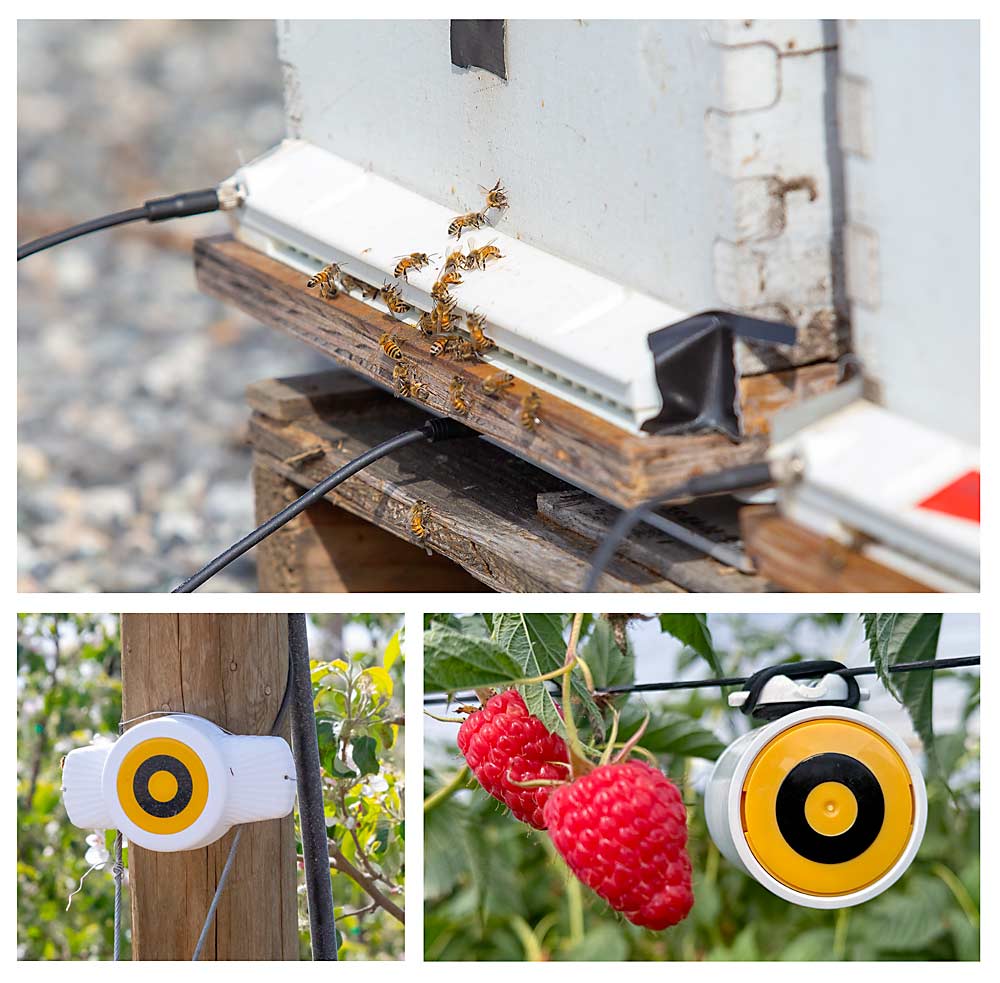
The company installed the equipment any grower client would get — sensors that measure temperature, humidity and sound inside the hives and in-field auditory sensors that detect the difference between the sound of a bee working a flower and one simply flying by.
However, to capitalize on the research mission of the Smart Orchard, BeeHero added some extras — trail cameras, a weather station, pollen traps, scales and bee counters — to the colony boxes.
Veselka, who manages the farm hosting the Smart Orchard trials, particularly wanted to know which pollenizer trees were the most attractive during WA 38 bloom. For the past two years in his blocks, Evereste crab apples beat out Snowdrift and Granny Smith, according to BeeHero data drawn from the base equipment.
“They were monitoring that really well, and that wasn’t something you could do before,” Veselka said.
Over time, growers could use the data to build benchmarks for pollination goals and order the exact number of hives instead of just hedging their bets, assuming more is always better and hoping for the best, Kanot said.
“Here, there is a little bit more than hoping,” he said.
Beewise
Silicon Valley startup Beewise tilts toward automation, combining cameras with a computer inside a climate-controlled hive that not only monitors colonies but also feeds them, adjusts their environmental conditions, moves frames around and heats them for Varroa mite treatment.
“We’ve built a robotic beehive,” said Saar Safra, CEO and founder.
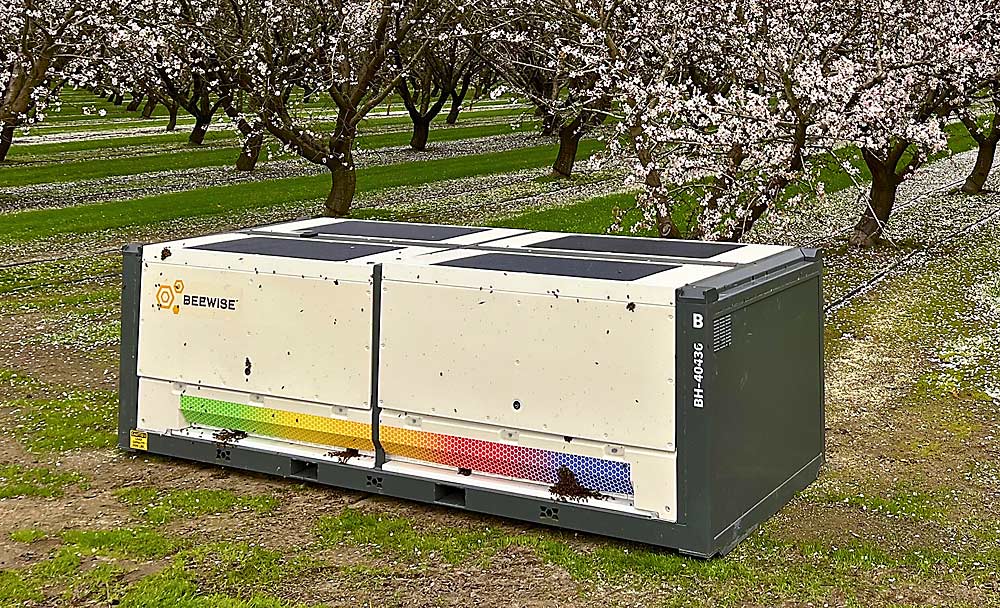
The company teamed up with beekeepers in a profit-sharing model to deliver these BeeHomes, each of which fits about 10 colonies. Together, they place more than 250,000 colonies worldwide, Safra said.
The technology inside each BeeHome measures and quantifies bee activity, brood health, pollen volume and more, frame by frame. Growers and beekeepers would otherwise have to do all that by hand.
The bee colonies, and their frames, sit low in the insulated box topped with solar panels. A robotic arm equipped with cameras slides back and forth over the top to hoist, scan and manipulate individual frames as needed.
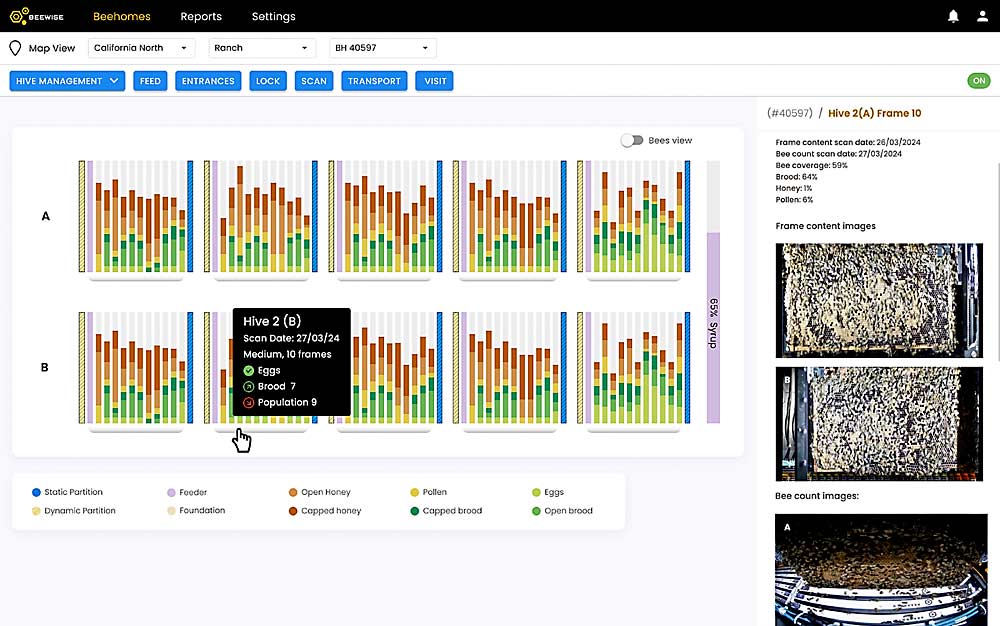
The BeeHome also can completely shut the doors to trap bees inside during pesticide application, either automatically if detected by the box’s sensors or as instructed by beekeepers through the app.
As for tracking pollination in the field, people do that. The company has about 200 employees, including “tree visitation experts” who watch bees visit blooms and log data into the dashboard to better inform the computer.
Beewise also has Washington tree fruit and berry customers, Safra said.
Nectar
Nectar of Montreal, Canada, sells its radio-frequency identification tags and software to beekeepers, but growers would benefit from the data, too, said CEO Marc-André Roberge. They could work with their beekeepers to adjust their farming practices to boost hive health based on data.
Some beekeepers use Nectar with BeeHero.
“If you work with a Nectar beekeeper, you care about the resilience of your supply chain,” Roberge said.
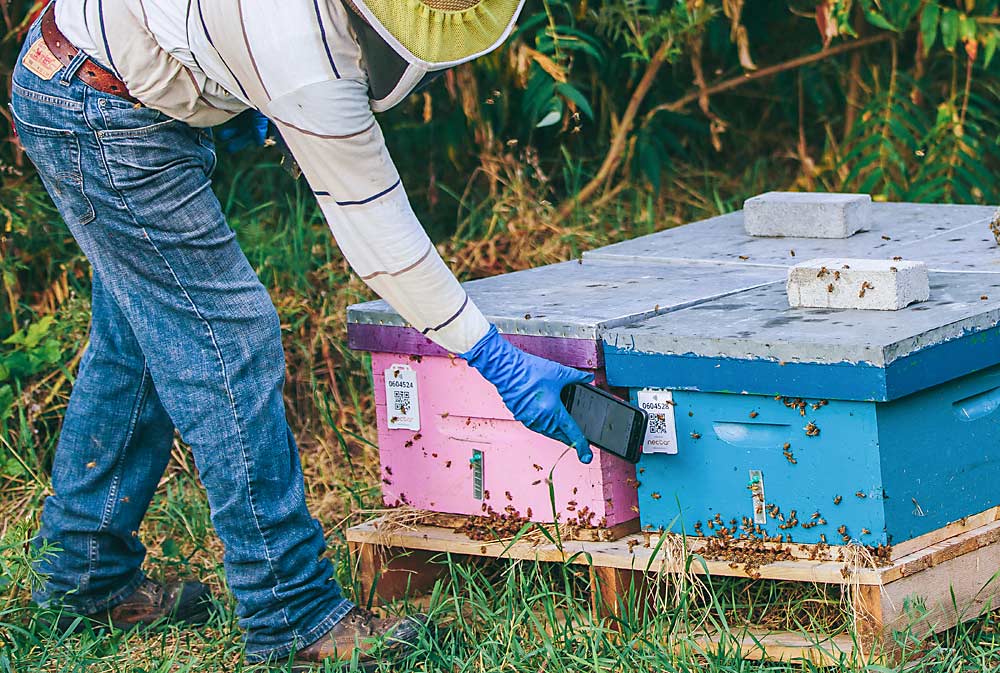
Cost
Prices of honey bee services have always varied by market, geography and crop, but both Beewise and BeeHero say they set fees on par with those of conventional wooden-box honey bee services, hoping to profit from stronger hives with more precision.
However, Washington State University honey bee expert Brandon Hopkins suspects this extra information will inevitably cost growers more, because it will require more work by beekeepers to ensure the contracted quality and uniformity of their hives. In some crops, namely vegetable seeds, growers pay more for frame number and other indicators of hive strength.
“If you start demanding quality, generally you have to pay for that,” said Hopkins, assistant research professor of entomology.
Even with metrics and automation, hive quality comes down to beekeepers taking care of their hives before and after pollination. Most do this well, Hopkins said, but occasionally some place bad hives. Growers doing their own due diligence may get around to cracking the lids of only about 10 percent of their colonies.
He still recommends farmers do that, even with the new companies’ data. He has not seen researchers independently validate the quality improvement the ag tech companies tout.
Beewise has participated in WSU blueberry field days in Skagit County, research projects measuring its heat chamber mite treatment at Auburn University in Alabama and colony entrance studies at the University of California, Davis, Safra said. BeeHero has aided in a project about hive orientation with U.S. Department of Agriculture researchers in Arizona, product evaluation trials by an Israeli seed company and university research in Israel and Germany.
Some beekeepers in California have doubts, said Ryan Burris, president of the California State Beekeepers Association. They like the idea of sensors that inform them of hive strength but have not seen BeeHero and Beewise proven out yet, he said. The 2025 colony loss shows that.
“These technology companies didn’t see it coming,” said Burris, who owns Park Legacy Queens of Palo Cedro. “They didn’t warn us about it. They didn’t stop it.”
Some of the group’s members work with BeeHero or Beewise, he said, but boosting access to diverse forage land, improving treatment for mites and building trusting relationships with growers are all more important than emerging sensor technology.
BeeHero doesn’t want to replace those things, a company spokesman said in an email, and the company’s analysts have predicted colony health problems in the hives they monitor.
Technology and traditional beekeeping can work together, said the BeeHero representative. “Our belief is that there is no single solution to the problems facing bees,” he said. •







Leave A Comment